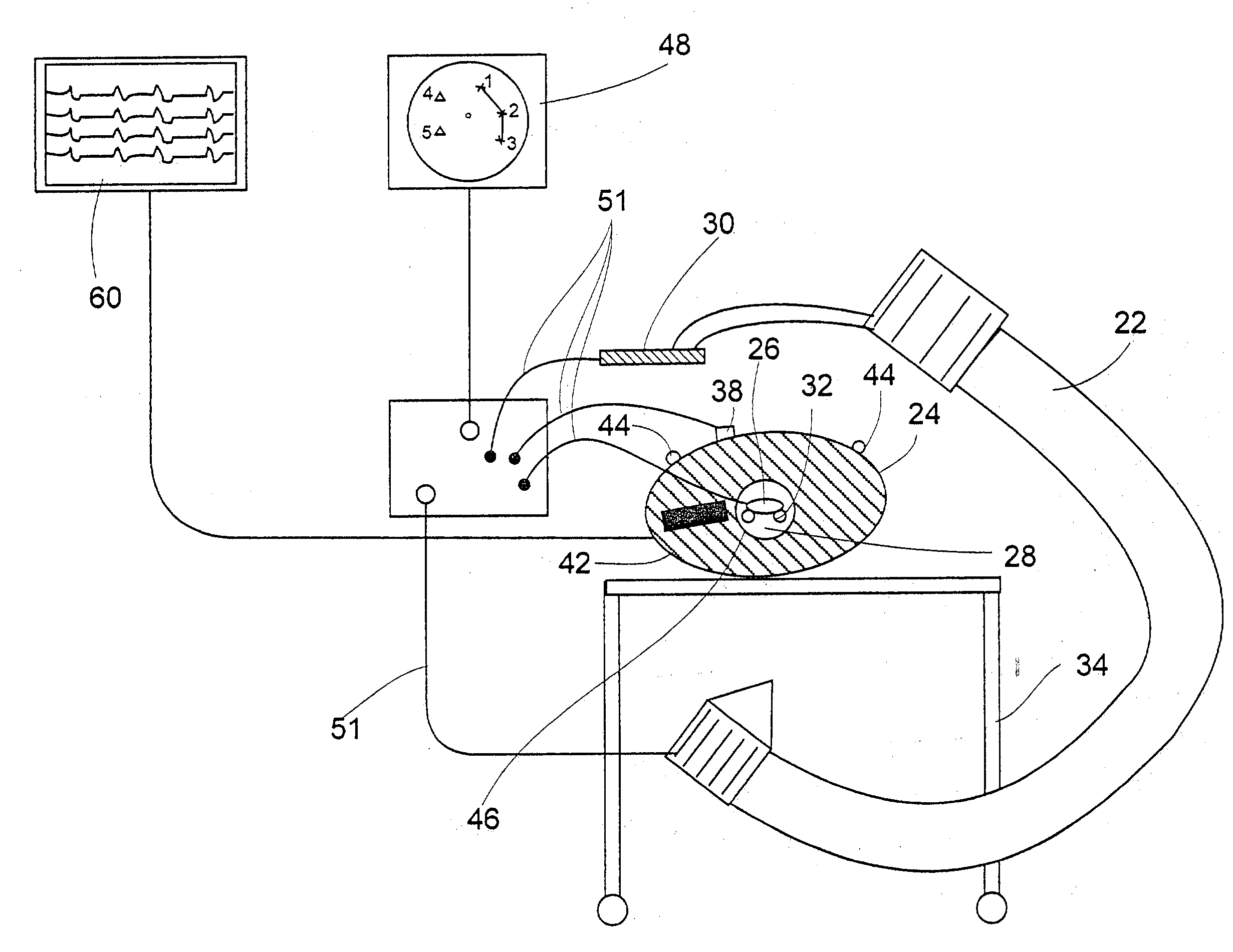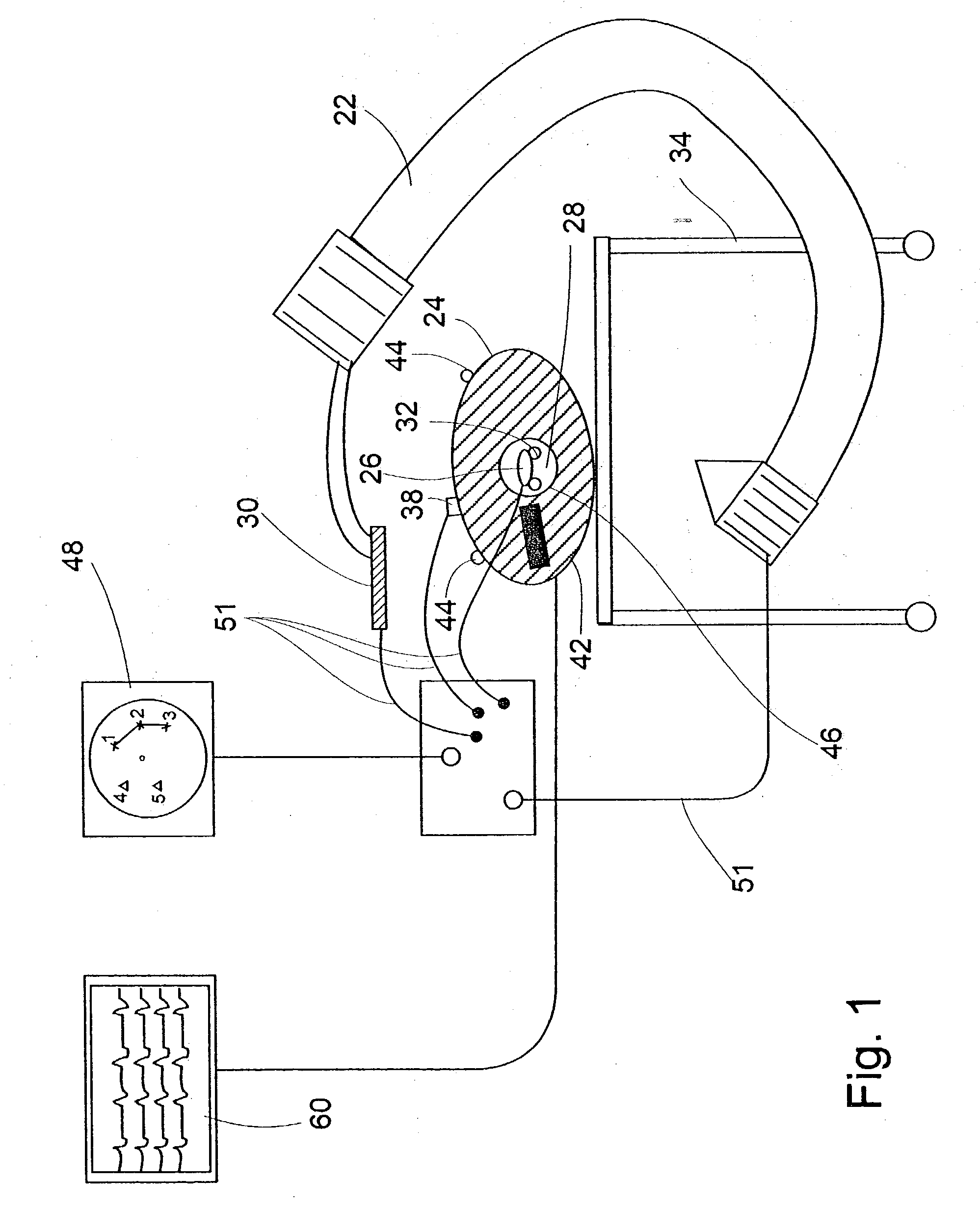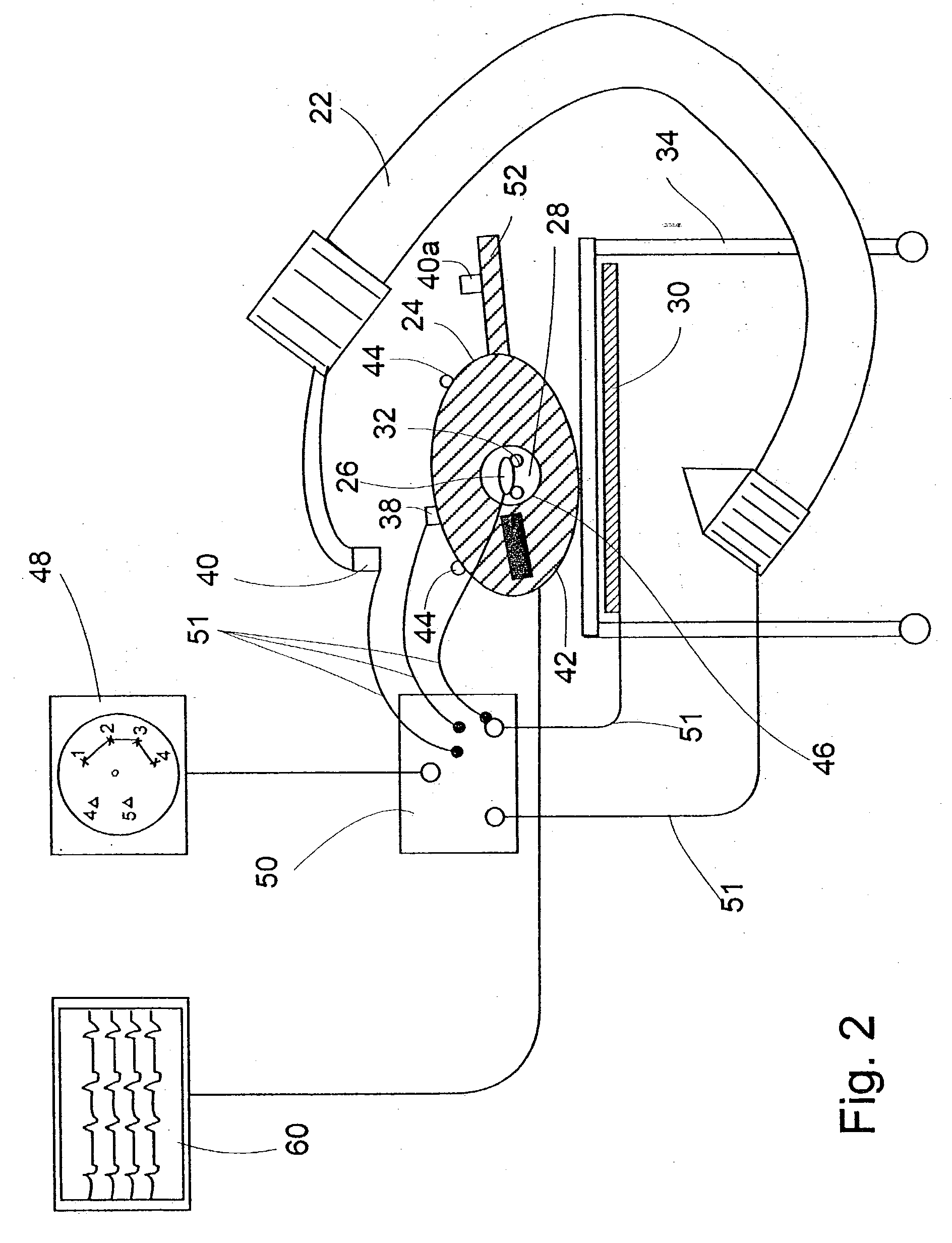System and method of recording and displaying in context of an image a location of at least one point-of-interest in a body during an intra-body medical procedure
a technology an image, which is applied in the field of system and method of recording and displaying in context of an image the location of at least one point-of-interest in a body during an intra-body medical procedure, can solve the problems of high subjective visual memorization, failure to teach the co-establishment of the location of the imaging apparatus or the image, and hardly or not at all imageabl
- Summary
- Abstract
- Description
- Claims
- Application Information
AI Technical Summary
Benefits of technology
Problems solved by technology
Method used
Image
Examples
Embodiment Construction
[0259] Reference is now made to the following example, which together with the above descriptions, illustrate the invention in a non limiting fashion.
[0260] This example is directed at measuring parameters required for fluoroscope imaging according to the present invention.
[0261] Assume a first system of coordinates {K,L,F} which defines the location of an of an imaging instrument, say a fluoroscope having a source and an imaging plane.
[0262] Assume a second system of coordinates {X,Y,Z} which defines the location of a location implement.
[0263] Define {k.sub.0,l.sub.0,f.sub.0} as the origin of the {X,Y,Z} system as reflected on the {K,L,F} system of coordinates.
[0264] The {X,Y,Z} system is rotated with respect to the {K,L,F} system.
[0265] The rotation operator, T, is a matrix of 3.times.3 terms which satisfies the orthonormality condition.
[0266] The location implement implemented in the catheter is at {x,y,z} as measured in the {X,Y,Z} system.
[0267] The location implement is imageab...
PUM
 Login to View More
Login to View More Abstract
Description
Claims
Application Information
 Login to View More
Login to View More - R&D
- Intellectual Property
- Life Sciences
- Materials
- Tech Scout
- Unparalleled Data Quality
- Higher Quality Content
- 60% Fewer Hallucinations
Browse by: Latest US Patents, China's latest patents, Technical Efficacy Thesaurus, Application Domain, Technology Topic, Popular Technical Reports.
© 2025 PatSnap. All rights reserved.Legal|Privacy policy|Modern Slavery Act Transparency Statement|Sitemap|About US| Contact US: help@patsnap.com



